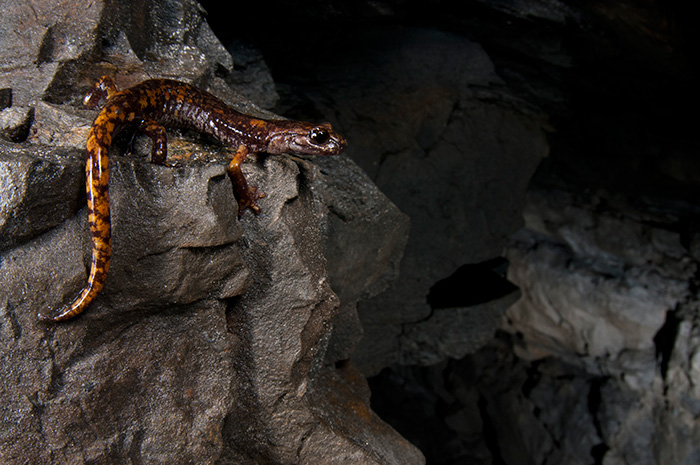
It can sounds strange, but in the world there are animals able to breathe without lungs. I’m not talking about some kind of strange animals but simple cave salamander.
This type of amphibians, belonging to the Plethodonthidae family, are totally devoid of lungs, so they breathe by their very vascularized skin and buccal cavity. This feature obliges them to live in very humid habitats, that occur in all existing species of them.
There are many species, more than 300, most distributed in the northern hemisphere, almost all in America. There are 8 species in Eurasia, 7 in Italy and 1, newly discovered, in Corea.
This family shows many variations about life cycle and morphological characteristics; there are species that reproduce and spawn on the ground and other that instead a classic amphibious cycle, with aquatic larvae and terrestrial adults.
The color is very variable, some are very bright, other mimetic. However, all of these salamander have elongated body, short legs and high production of mucus, which makes them slippery.
Like many amphibians, the cave salamander emit toxins from skin glands, in order to save itself by any predators.
In Italy, cave salamanders live in deciduous forests, near streams in the Appennines, in cave (natural or artificial) and in some areas can also be found in the cellars.
Three species are continental: Speleomantes strinatii, S. ambrosii (subsp. bianchi, subsp. ambrosii) and S. italicus.
The other five are located in Sardinia: Atylodes genei, Speleomantes flavus, S. supramontis, S. imperialis (subsp. imperialis, subsp. sarrabusensis).
All the species mentioned and all the other members of the family have parental care, that means: protect their eggs and offspring by other adults and predators. In addition to that, the mother stay in contact with the eggs, and covers them with mucus in order to protect them by fungi and bacteria.
Another peculiarity of this family, precisely of the subfamily Plethodontinae, is the ability to protrude the tongue to catch the prey. The real champion in this skill is S. supramontis, which is able to protrude not only the tongue but also the tongue’s skeleton, reaching a length equal to 80% of their body.

